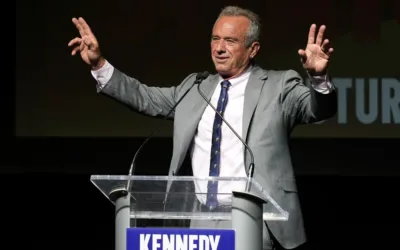
#image_title
Projects and shows provide expression, opportunity, even a boost to tourism.
Art is sprouting in unlikely places during this pandemic year. It captures 2020’s whispers and its shouts of rage; its hope, pain, and whimsy.
Best known and most fervent were some 200 murals that appeared in Madison, especially along State Street, shortly after the police killing of George Floyd in Minneapolis in May. Many of them covered boarded storefronts and were commissioned by the city of Madison in the weeks following the unrest that accompanied the protesting of police violence and systemic racism.
On Monroe Street you’ll find Madison for All, a vibrant expression of inclusiveness on a former arts center, whose owner commissioned it as her gift to the neighborhood. The bright colors are hard to miss when heading south.
On a shorter and more obscure street, two miles south of downtown, artists covered part of a sewage pumping station as they depicted the connection between familiar and microscopic worlds. This Molecular Structure Mural on Plaenert Drive is the city’s fifth Science to Street Art project and will be finished soon.
JEDI principles – as in Just, Equitable, Diverse and Inclusive – are the foundation for these endeavors, which founder Ginger Ann Contreras of the Wisconsin Institute for Discovery intends to expand to other parts of Wisconsin next year.
“We identify areas that lack public art resources and underserved communities,” she said. They rely on individual, community, and corporate sponsorships to pay for mural making. One of the program’s goals is to provide beauty that educates.


Contreras, trained in bioarchaeology and theater, realizes art and science might not seem compatible.
But both “require curiosity, experimentation and a passion to understand the world around us,” she explains. “At one time, these two scholarships fused fluidly. Think about Leonardo Da Vinci’s anatomical studies. Is that not a science-art fusion?”
Another example of how the lines blur between disciplines was the large-scale art in Sauk County farm fields recently displayed as part of the annual Farm/Art DTour. Funded in part by the National Endowment for the Arts, the tour takes place along a self-guided route of 50-some miles, most rural and perfect for leisurely driving during this leaf-changing season.
The pieces provided a mix of fantasy, farm life tributes, complex collaborations and timely pokes at life as we know it.


Erika Nelson’s “Step Right Up! Your Voices, Your Votes,” was timed right for an election year: a half-donkey, half-elephant immersed in a screen-printed jumble of carnival posters and fictional political signs.
Where art begins and ends isn’t always clear because the Farm/Art DTour route scoots within the edge of Wisconsin’s scenic Driftless Area, where the manmade expressions give way to nature’s larger canvas.
The effort was part of this year’s abbreviated Fermentation Festival, presented by the 20-year-old Wormfarm Institute of Reedsburg, a nonprofit that aims to integrate culture and agriculture.
Big splashes of public art are one thing, but creative expressions of social awareness can also be produced very quietly, one stitch at a time.
Terri Messinides of Madison, a fiber artist and retired registered nurse, is concentrating on embroidery—not of flowery bouquets but weighted words.
“In the Pejorative” is her growing collection of fabrics featuring common words that are derogatory and demeaning to women. Think “ditzy,” “battle-axe,” “whore,” and “bossy.”
“Misogyny still exists despite the progress women have made,” Messinides says. “Our language is an expression of our culture, and we are a long way from equality. By highlighting these words and their enormous numbers, I hope to bring to light the hidden ways women are discriminated against.”
Hundreds, maybe thousands of words in the English language fit the bill, says the artist, who is studying word etymology while embroidering each word on its own square of muslin. “I intend to continue embroidering for years, producing various artwork in this theme.”
Why embroider? It is “a traditional medium used by women, and since this project is about words that are derogatory to women, it just seemed to make sense.”
She uses a time-consuming French knot stitch, “which speaks to the longevity of these words and the difficulty of removing or erasing them from our lives,” creating a project has no discernible end.

This billionaire’s PAC is spreading a big lie about Tammy Baldwin, Medicare, and taxpayer savings
Restoration PAC, funded by Uline’s Richard Uihlein, twists the significance of forcing Big Pharma to negotiate for lower bulk pricing on Medicare...

New Biden rules deliver automatic cash refunds for canceled flights, ban surprise fees
In the aftermath of a canceled or delayed flight, there’s nothing less appealing than spending hours on the phone waiting to speak with an airline...

Opinion: It’s time for Congress to fight for small businesses instead of big corporations
May is National Small Business Month. Our elected leaders need to show leadership all year long. For the past 27 years I’ve been fortunate to pursue...

Biden makes 4 million more workers eligible for overtime pay
The Biden administration announced a new rule Tuesday to expand overtime pay for around 4 million lower-paid salaried employees nationwide. The...




